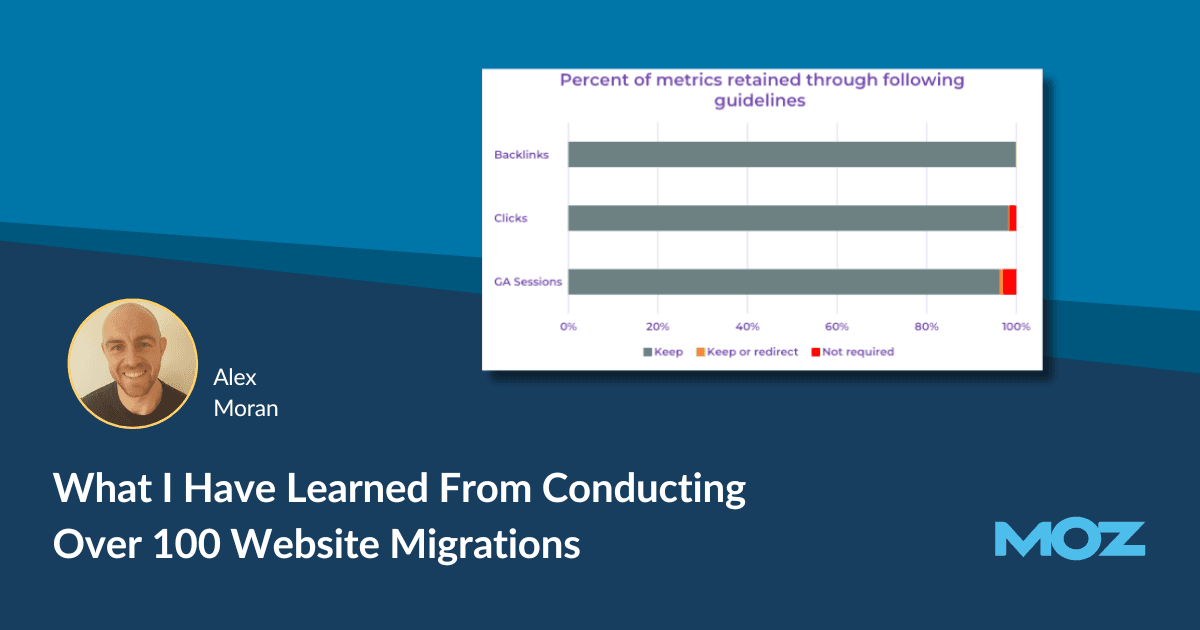Here are some valuable tips and tricks to navigate the complexities of migration projects:
1. A website’s size doesn’t always determine difficulty
The size of the site doesn’t necessarily correlate with the complexity of the migration. Sometimes, a large site can transition relatively straightforwardly without major URL or design changes.
2. Temporary errors are acceptable
While it’s ideal to have a flawless technical SEO report, minor issues such as overly long titles or temporary 302 redirects shouldn’t halt the entire migration process. These can be addressed post-migration as part of regular maintenance.
3. Improve SEO during design and build
Use the design and build stage to enhance the website’s SEO. Address site architecture issues, meta structures, schema, and content edits you haven’t implemented. These are more likely to be pushed through because they make more fundamental changes.
4. Version and date files
I’ve been doing these migrations for a long time, but only one month ago, I was in a situation with a client where the URL structure had to keep changing due to niche technical issues.
As a result, I had to recreate the redirect mapping 14 times. You don’t want to call all those documents something like “redirect_mapping.xlsx” or “redirect_mapping_revised.xlsx.” Instead, make sure it’s versioned and dated, along with the staging testing, because you might have to do that multiple times.
5. Don’t assess speed until the site is live
While it’s useful to test site speed in the staging environment, some optimizations, like text compression, may not be fully implemented until the live environment. The same rules will not always apply to staging environments, as developers do not need to implement them. Hence, look for broader speed issues in staging and conduct speed testing post-launch.
6. Set expectations with clients and stakeholders
As you start a migration project, help your clients understand the potential downsides and the necessary steps. Use a standard migration walkthrough to demonstrate what could go wrong, emphasizing the importance of thorough planning and risk mitigation.
Remember that from an SEO perspective, the primary goal is to retain traffic. While enhancing traffic and conversion rates is possible, focus on maintaining current traffic levels. A steady traffic flow post-migration signifies success.
A useful tactic in discussions with clients involves redirect mapping. When you list out URLs to keep and those to remove, consider presenting a bar graph showing the estimated traffic loss if you discard specific URLs. This visual representation can be impactful, helping clients reassess the necessity of removing specific pages.
